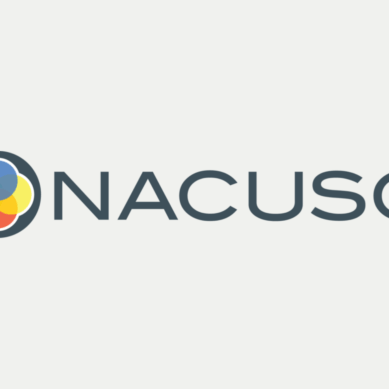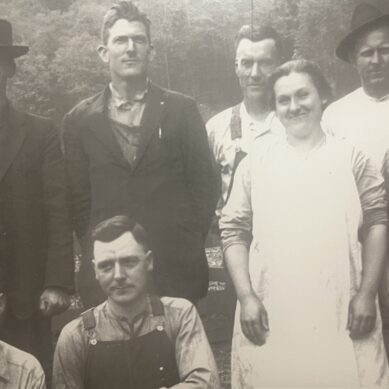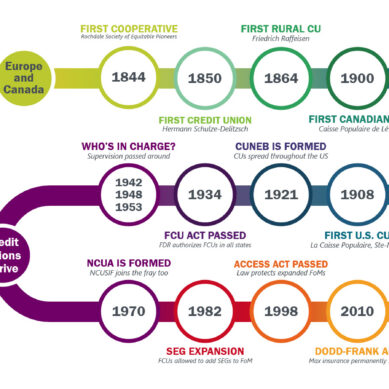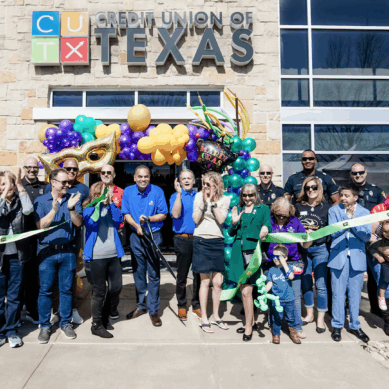Lessons from Journey Federal Credit Union’s Journey to Excellence Training Series and Journey Forward Model
In today’s rapidly evolving financial services landscape, credit unions face the challenge of modernizing their operations and service models while staying true to their core mission of member service. At Journey Federal Credit Union (JFCU), we recently completed a year-long transformation that offers a roadmap for other credit unions seeking to navigate similar change. Guided by our strategic plan, Pathway to Prosperity: A Transformative Journey, we implemented a comprehensive overhaul of operations, introducing new technologies, products, and training programs to align our workforce with the needs of modern members.
The transformation was built around two critical components: a 15-week training program known as the Journey to Excellence Training Series and the launch of a new service framework called the Journey Forward model. Together, these initiatives reshaped our approach to member service, employee empowerment, and technological integration. By sharing the story of our transformation, this article outlines how other credit unions can manage rapid change while maintaining a commitment to their core values.
Why JFCU undertook the Journey to Excellence training series
We recognized early on that investing in technology and infrastructure alone would not be enough to remain competitive. With the introduction of a range of new tools, including Interactive Teller Machines (ITMs), online and mobile banking upgrades, and new debit and credit card offerings, it was equally important to maintain our high-touch, personalized service model, ensuring that members felt supported during their interactions with us.
Our solution was a strategic, long-term investment in our most valuable resource: our employees. The Journey to Excellence training series was designed to empower our team with the skills, confidence, and authority to navigate these new tools and deliver exceptional member service. More than that, it sought to foster a culture of ownership and professionalism across all branches.
We believed that while technology is an incredible enabler, it needs to be paired with the right mindset and culture to fulfill its potential. Our staff needed the tools to excel in this new environment and the confidence to make decisions on the spot. That’s where the Journey to Excellence training series came in.
For other credit unions contemplating significant technological investments, balancing those investments with an equal focus on employee empowerment is essential. The most advanced tools are only as effective as the people who use them.
Structuring the training series
The Journey to Excellence Training Series was a CEO designed and led 15-week program, with each session spanning two hours and covering critical topics like product knowledge, communication skills, and service excellence. This training ensured that employees were prepared to handle the challenges of a modernized credit union while maintaining the personalized touch that sets us apart.
The decision to spread the program over 15 weeks allowed for gradual learning and reinforcement. Each week built on the previous one, enabling employees to develop a deep understanding of the new products and services while also honing their interpersonal skills. Importantly, the training series emphasized not only technical skills but also soft skills like communication, empathy, and problem-solving.
The goals of the Journey to Excellence Training Series included:
- Empowerment and Ownership: Employees were trained to make decisions independently, take responsibility for their interactions with members, and solve problems without needing to escalate every issue.
- Redefining Professionalism: We redefined professionalism as being exceptionally good at what you do, rather than adhering to outdated dress codes or formalities. Employees were encouraged to meet members where they were—both literally and figuratively—by matching their tone and approach while delivering a superior service experience.
- Consistency Across Branches: The training ensured that members could expect the same high level of service regardless of which branch they visited, fostering a uniform member experience.
- Enhanced Product Knowledge: Employees gained a deep understanding of new product offerings, including checking accounts, credit cards, and rewards programs, to help them better serve members.
- Member-Centered Service: The focus shifted from routine transactions to more meaningful, solution-driven conversations with members, helping build stronger, long-lasting relationships.
A well-structured training program with clear goals ensures that employees are not only prepared to handle new technologies but are also empowered to take ownership of their interactions. This type of program allows employees to grow into their roles as leaders, fostering a sense of personal responsibility and excellence.
Journey forward: introducing new technologies and products
While the Journey to Excellence Training Series transformed how our employees approached member service, the Journey Forward model modernized our operations. We introduced a number of key technological innovations, including ITMs that allowed members to complete routine transactions without a teller’s assistance, freeing up staff to focus on more complex member needs.
But technological upgrades weren’t limited to ITMs. We also rolled out a range of new products and features designed to offer members more flexibility and convenience, including:
- Online Banking and Mobile Upgrades: We enhanced our digital platforms by introducing SavvyMoney, providing members with real-time access to credit scores and personalized financial advice, as well as Self-Service Skip-a-Pay and On-Demand Deposits, making it easier for members to manage their accounts.
- New Mastercard Credit Card: After switching issuers, we launched a straightforward credit card with market-leading rates and a fully integrated rewards platform.
- New Checking Accounts: We introduced Journey Free Checking (without fees such as overdraft protection, overdraft or automatic transfer, or NSF fees), Dividend Checking, and Rewards Checking, each tailored to meet specific member needs.
- Debit Round-Up and Other Card Features: Debit Round-Up automatically rounds up each debit card purchase to the nearest dollar, transferring the difference to a savings account and helping members save effortlessly. The introduction of self-service debit and credit card controls in mobile apps allows members to monitor and control their card activity on the fly.
- Co-Mingled Rewards Program: Our unified rewards system allows members to earn points on both debit and credit card transactions, offering greater value across their financial activities.
This combination of technological enhancements and product innovation reflects our commitment to meeting members where they are while guiding them toward using self-service tools. As members become more comfortable using digital platforms, employees are freed up to engage in deeper, more personalized conversations that help build stronger relationships.
For credit unions exploring how to incorporate new technologies, our approach demonstrates that introducing new tools is most effective when paired with strong, member-focused service. Employees must be well-equipped to guide members through the transition and to help them make the most of these innovations.
Professionalism: a new definition
One of the standout aspects of our transformation was the redefinition of professionalism. Traditionally, professionalism has been associated with formal attire, rigid communication, and a focus on procedure. We flipped this script, emphasizing that true professionalism means excelling in your role, whatever it may be.
Our employees were encouraged to engage members in a way that felt authentic and genuine. This meant matching their style, tone, and dress, but offering a superior, knowledge-driven experience. By focusing on delivering exceptional service rather than adhering to old-fashioned ideas about appearance, we were able to create a more inclusive environment where members felt understood and respected.
Credit unions can benefit from adopting a similar approach: professionalism isn’t about how you look; it’s about how well you serve your members. Redefining professionalism in this way can create a more flexible and responsive service model, where the focus is always on the members’ needs.
Empowered employees, satisfied members: measuring the impact
The Journey to Excellence Training Series and Journey Forward initiatives have had a measurable impact on our member satisfaction. Over the past two years, our Google review score has risen from 2.9 to an impressive 4.5, reflecting our commitment to improving the member experience. Since the start of the Training Series, reviews have increased by over 10%, with members consistently highlighting the enhanced service they’ve received. This improvement isn’t just about the numbers—it reflects the deeper, more meaningful interactions that our staff are now having with members.
The increase in member satisfaction is a direct result of the empowerment felt by employees. When employees are confident in their roles and have the authority to make decisions, they are able to deliver a superior service experience, which in turn fosters member loyalty and trust.
For credit unions looking to measure the success of a cultural shift, member feedback is an invaluable tool. By tracking key metrics like member satisfaction and reviews, credit unions can assess the real-world impact of their efforts and make adjustments as needed.
Leadership and collaboration: the importance of a unified vision
While the Journey to Excellence Training Series was a key part of our transformation, it wouldn’t have been possible without collaboration at the highest levels of the organization. Our Chief Operating Officer, William McSweeney, played a crucial role in overseeing the operational side of the transformation. From ensuring the smooth rollout of ITMs to managing branch remodels and construction projects, these efforts ensured that our infrastructure aligned with our new service model.
This kind of collaboration between leadership roles is essential for any credit union undertaking a major transformation. It ensures that both strategic vision and operational execution are aligned, allowing for smoother implementation and more cohesive outcomes.
Credit unions embarking on similar journeys should ensure that their leadership teams are working closely together, with a shared commitment to both cultural and operational goals.
Navigating the future: building on success
As we look ahead, the Journey Forward model will continue to guide our approach to member service and operational innovation. The introduction of new roles, like the Navigator, who provides personalized financial guidance, and the Pathfinder, who assists members in using digital tools, ensures that we remain focused on delivering high-touch, member-first service while embracing modern technologies.
These new roles reflect a commitment to long-term growth. By creating positions that enhance both the member and employee experience, we are positioning ourselves for continued success in an increasingly digital landscape.
A model for change
The Journey to Excellence Training Series and Journey Forward model provides a roadmap for how credit unions can successfully navigate rapid change while maintaining their commitment to member service. By investing in employees, embracing innovation, and redefining professionalism, we have created a more responsive, empowered workforce capable of meeting the needs of modern members.
For credit unions looking to manage similar transformations, the lesson from our journey is clear: change isn’t just about adopting new tools or introducing new products—it’s about empowering your people to lead, innovate, and deliver exceptional service every day.
























































